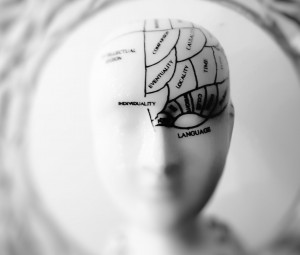9 Interesting Facts About Language Diversity
There are over 7,000 languages in the world today and professional translators play an important role not only in the day to day activities and business support, but also in preserving the heritage of cultures and languages. Very often, dominant languages are endangering many indigenous forms of communication.
In 2017, the United Nations General Assembly recognised the importance professional linguists have in connecting nations. The significant work conducted by language translators was celebrated on the recent International Translation Day under the theme ‘Translation and Diversity.’
The international Federation of Translators (IFT) also fully emphasizes the importance of maintaining and learning cultural languages for the benefit of greater international cooperation.
However, the IFT also notes, that “the downside of cultural homogenisation threatens [language] diversity.” In honour of the minority languages, we will discuss the diverse range of languages around the world and present you with some facts, which are not widely known outside the language translation community, and who knows, perhaps even you will be able to learn something new?

-
Number of languages
According to the last estimate and official statistics, there are around 7100 languages which are spoken around the world. Nonetheless, the actual number is still uncertain as some languages have a very fine line between being an actual language and a dialect whilst other languages are dying out regularly.
Linguist experts also believe that there may still be some remote parts of the world where new languages are yet to be discovered. The last language to surface to the mainstream was the Koro language from the mountains of north-east India discovered in 2013.
-
Over 30% of all languages are endangered
Language diversity may be widespread, but according to UNESCO languages Atlas, there are as many as 2,473 languages that are in danger of becoming extinct. Up to 90% of languages spoken today will disappear within the next 100 years. One such language is Pawnee spoken by the Native tribes of North America.
Although there are still a few elders who are able to speak this ancient language, the youngest members are taught English in schools, which has become the dominant language throughout community. Experts expect Pawnee to die out in as little as two years.
-
The Olympics has a language translation forum
Global events like the Olympics have an established translation forum, which first moved into the social media space for the 2012 London Olympics.
However, the first forum to be officially established was the 2014 winter Olympics in Russia. The International Olympic Committee hired some 1000 professional linguists to help communicate with visitors throughout the Games.
Each Olympics has three official languages, English, French and the host nation. The translation forum expands the total number of available languages to seven and can be accessed by an app for online users or a call centre that provides directions. The other official languages are Chinese, Japanese, German and Korean.
-
90% of languages are spoken by less than 100,000
The majority of languages are spoken by small groups. According to the Council of Europe, 96% of languages are spoken by 4% of the global population and 90% are spoken by less than 100,000 people.
Although the number of people speaking a language doesn’t make a language endangered directly, minority languages are vulnerable to extinction. It is estimated that around 2300 languages are vulnerable. Providing the language is passed down to younger generations, the language will survive.
-
Some languages have 1.5m conjugations
In a small village on the edge of the Caspian Sea in southern Russia is a language that has an incredible 1,5000,000 separate conjugations. The Archib language is spoken by no more than 1,200 people and also features a “voiceless velar lateral fricatives” which are elements of sounds in speech that end with a guttural ‘ach’ as in Bach.
-
Europe speaks only 3% of the world’s indigenous languages
Although Europe has a large conglomeration of countries and around 260 indigenous languages, this only makes up three per cent of the world’s minority languages. Asia and Africa have the most diversity in languages and between them make up two-thirds of the world’s languages. There are 2,200 found in Asia with Papua New Guinea boasting no fewer than 832 different languages alone despite only having a land mass of 178,700 square miles. No wonder the country’s motto is “Unity in Diversity.”
-
Whistling is a language
Whistling has always been used for communication in one form or another, but the inhabitants of La Gomera on the coast of Spain rely on whistling as a key aspect to their language.
The Sylbo language consists of complex sounds ranging in tones to denote constants and verbs. Because the region is mountainous, the only way for inhabitants to communicate with one another over large distances is by whistling. If they were to shout the sound fades to nothing more than an incoherent mumble.
-
The simplest language to learn is found in Brazil
Remote tribes in Brazil have languages that are simple to learn, although sadly the majority of those languages are slowly dying out. One language which has survived (for now at least) is Pirahã, the last known language of its kind.
Before the Portuguese arrived to dominate the land and the language, there were dozens of languages throughout Brazil. Most natives spoke Nheengatu. However, many of the native languages are now extinct. Only 14 still remain.
The easiest indigenous language to learn is Pirahã, which only has between ten and twelve phonemes although does have some phonetic tones which consist of a series of hums and whistles. Pirahã is believed to be the easiest language in existence to learn.
-
There are 200 artificial languages
It is believed that around 200 artificial languages have been created since the 17th Century. The first of these were invented by philosophers and scholars to communicate in secret, but many were developed along trade routes.
The most commonly spoken artificial language is Esperanto which is a blend of Latin, English, German and Romance and is spoken by approximately 2 million people in Europe.
Despite the best efforts of professional linguists to preserve diversity in language it is inevitable many will die out. Nonetheless, as a professional translation agency, we always do our very best in order to connect nations of the global village and spread the love for languages.

